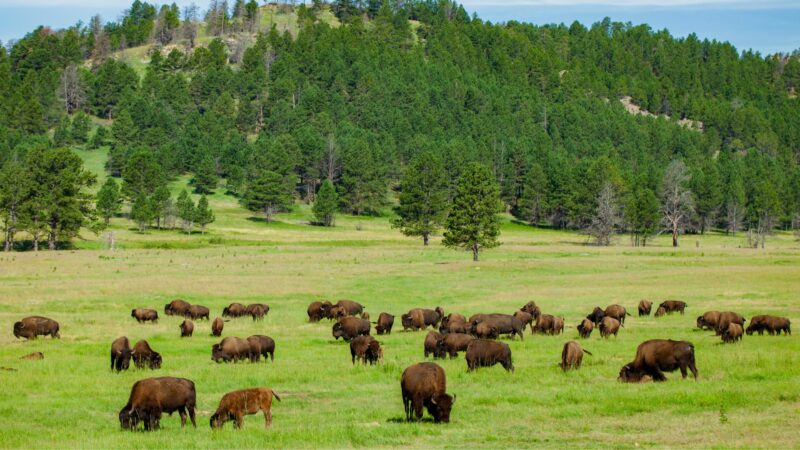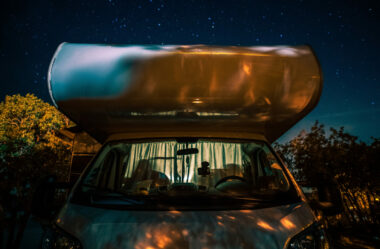Table of Contents Show
If you’re planning a trip to South Dakota, you likely have the Badlands and Mount Rushmore on your list of places to visit. But if you don’t have Wind Cave National Park on your itinerary, we think you should add it!
It won’t take more than a few hours to explore this national treasure, but make plans to see why this is one of the oldest national park sites in the U.S. on your next visit to South Dakota. Let’s learn more!
Where Is Wind Cave National Park?
Wind Cave National Park is south of Custer State Park and Mount Rushmore National Memorial in southwest South Dakota.
Badlands National Park is to the east, and Jewel Cave National Monument is to the northwest. Highway 79 runs along Wind Cave’s eastern boundary, while Highway 385 runs through the southwestern portion of the park.
When Did Wind Cave National Park Become A National Park?
Wind Cave National Park was one of the first federally protected areas in the country. It became the eighth national park and the first to protect a cave on January 9, 1903, when President Theodore Roosevelt signed the legislation.
Today, Wind Cave National Park protects 33,851 acres of land and wildlife. In 2022, over 600,000 people visited this national park site, about 100,000 fewer visitors than in 2021.
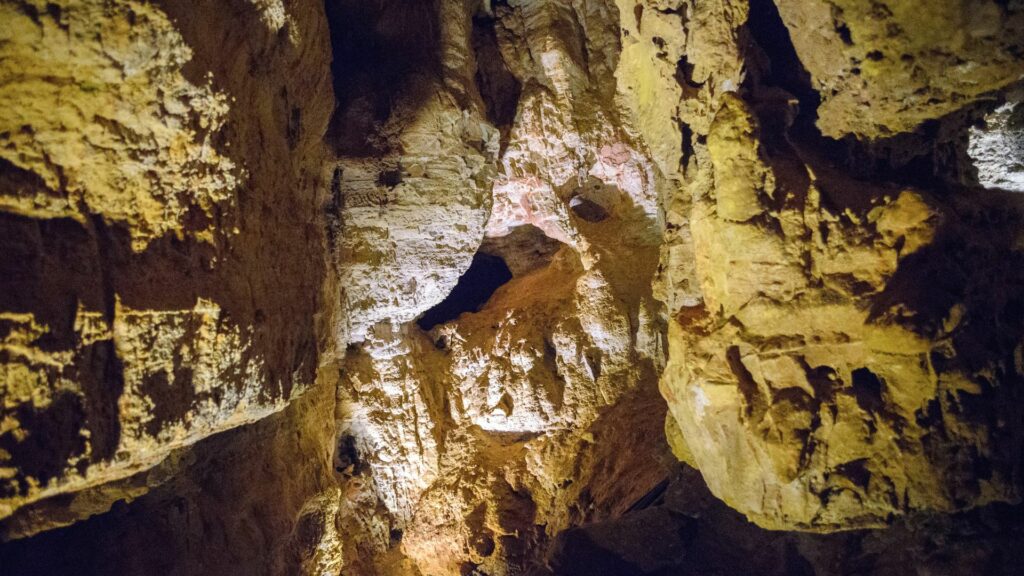
What’s So Special About Wind Cave National Park?
This national park protects two different worlds. Above ground, Wind Cave National Park is home to bison, elk, prairie dogs, and black-footed ferrets. The rolling prairie grasslands and forested hillsides provide miles of hiking trails, wildlife viewing areas, and scenic drives for visitors.
Below ground, Wind Cave National Park preserves one of the world’s longest and most complex caves. Guests enjoy touring the cave year-round and learning more about its development through exhibits in the visitor center.
Pro Tip: Here’s How to Plan an RV Trip to South Dakota!
3 Most Popular Attractions In Wind Cave National Park
Because of its small size, Wind Cave National Park doesn’t require hours of exploration. It’s a park you can visit in half a day and spend the rest of the day at Custer State Park or nearby Mount Rushmore. But when you come, here are three things you’ll want to do to get the most out of your visit.
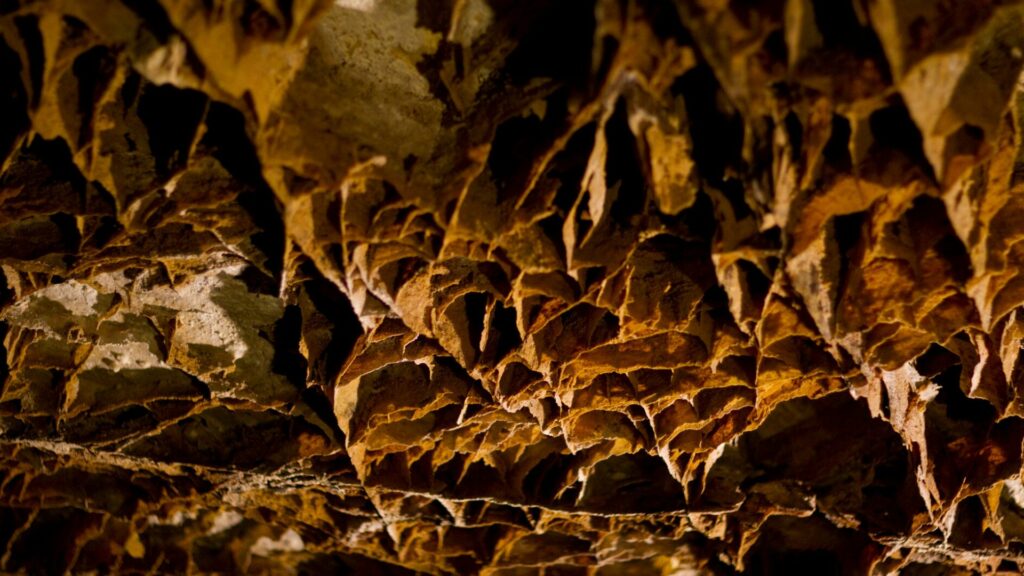
1. Take A Cave Tour
The number one attraction at Wind Cave National Park is the cave tours. These tours require an additional ticket separate from the entrance pass to the park. It’s best to purchase tickets from Recreation.gov ahead of time due to their popularity.
The Garden of Eden Tour lasts 60 minutes, the Natural Entrance Tour lasts 90 minutes, and the Fairgrounds Tour lasts 90 minutes. They all require descending stairs, and no pets are allowed.
2. Visit Wind Cave’s Natural Entrance
There aren’t many natural entrances to the cave, but the largest is about ten inches wide. You can find this entrance about 225 yards from the visitor center. You’ll likely feel the wind blowing from this small entrance.
Native Americans believe this special place is sacred. Therefore, you might see prayer bands. Be respectful and don’t disturb these religious cloths.
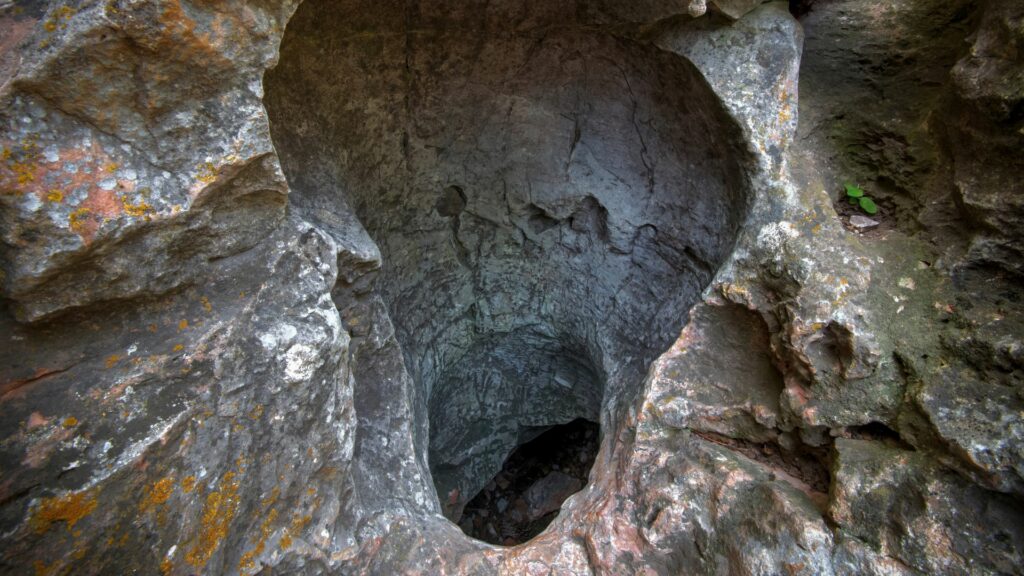
3. Hike A Pet-Friendly Trail
There are only two hikes that are pet-friendly at Wind Cave National Park. The Prairie Vista trailhead begins at the visitor center, passes the natural entrance, and meanders through the prairie grassland.
The Elk Mountian trailhead circles around the campground. Both are 1-mile loops. Please keep your pets on a leash at all times.
Pro Tip: Traveling with a four-legged companion? Take Your Furry Friend to These Dog-Friendly National Parks!
Although the main attraction of Wind Cave National Park is the cave system, don’t forget about the free-roaming wildlife. Visit the Bison Flats to catch a herd of these huge mammals. Pronghorn and elk also frequent this area.
Burrowing owls and prairie dogs live near the backcountry roads of NPS 5 and 6. Prairie dogs also live along Highway 385. So keep your eyes open and enjoy the scenic drives around Wind Cave National Park.
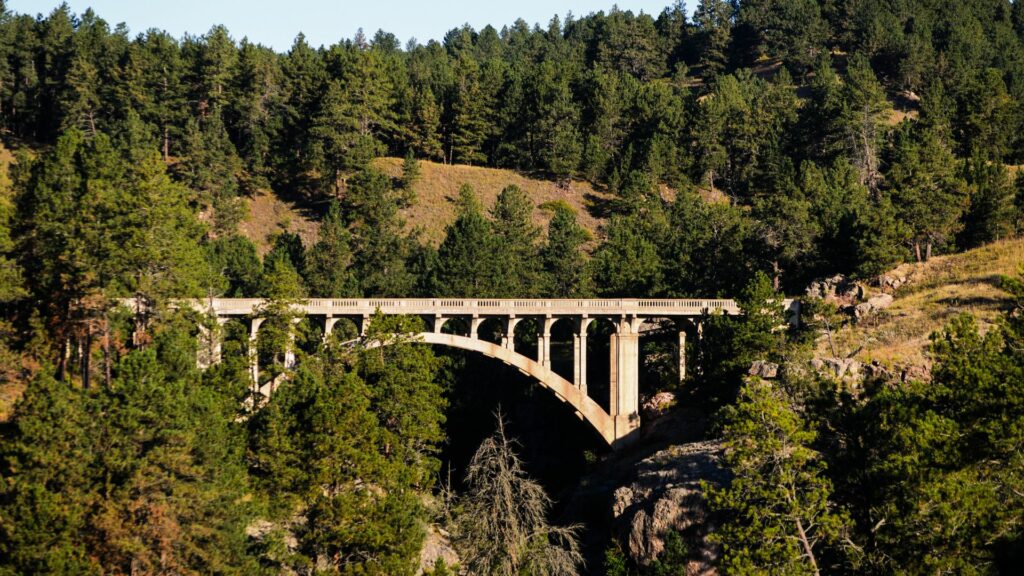
Best Place For Camping Near Wind Cave National Park
Elk Mountain Campground in Wind Cave National Park is open year-round. These 62 sites offer no hookups, but campers have access to potable water from late May through September. There’s no dump station either, but you can find a dump station in Hot Springs and Custer.
If you prefer full hookups, Hidden Lake Campground is located less than ten minutes south of Wind Cave National Park. There are pull-through and back-in sites that can accommodate rigs over any length.
The campground also has a shower house, restroom, laundry room, playground, and store.
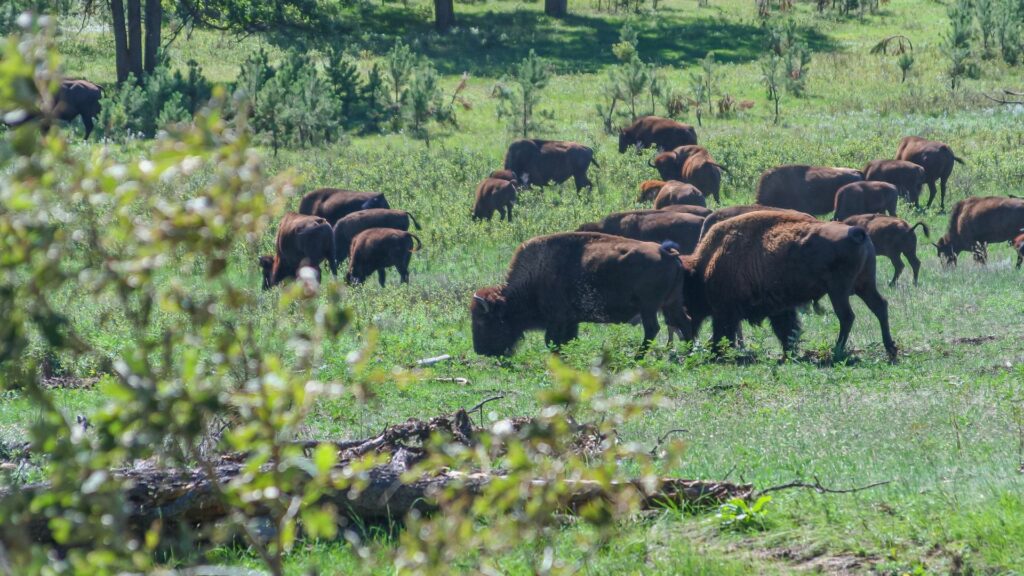
Is Visiting Wind Cave National Park Worth It?
Wind Cave National Park is one of the smaller national parks in the U.S. But with its proximity to other national park sites and the beautiful Black Hills region of South Dakota, there’s so much to do in this area.
Enjoy wildlife viewing, hiking, biking, scenic driving, cave touring, and more when you visit Wind Cave National Park!
Have you ever visited this part of South Dakota? Any tips you’d like to offer?




